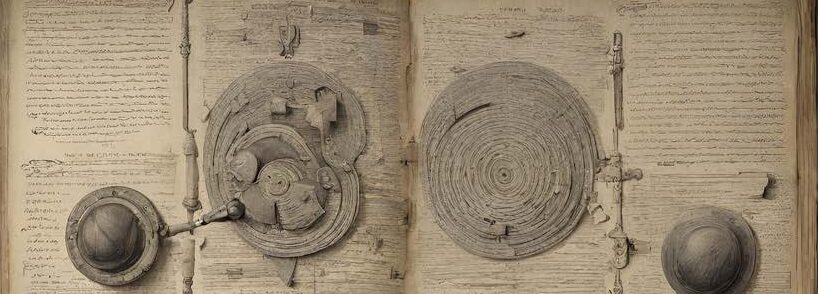
Typewriting refers to an act or process of using a typewriter by pressing individual keys that produce printed characters on a piece of paper. Typewriters were the primary tool for written communication before the advent of computers. They are electromechanical devices that function in such a way that when a key on the machine is pressed, it triggers a mechanism that imprints the corresponding character onto the paper attached to it.
The typewriters were established due to the demand and growing need to produce documents for day-to-day activities. Over the years, various enhancements were made to typewriters, impacting writing, and typing efficiency. Typewriters played an integral role in offices and businesses, however, their popularity declined with the rise of personal computers in the late 20th century. They remain an iconic symbol of a bygone era that built the foundations of the typing industry to this day.
History of the typewriter

I. The Hansen Writing Ball- The Hansen Writing Ball, made in 1875, is considered the first commercially produced typewriter, featuring a spherical design with keys attached to a large brass hemisphere (Hansen’s Writing Ball, Also Known as Malling-Hansen Writing Ball, n.d.). This design was intended to reduce the jamming of the typebars, making typing more efficient.
II. The Remington Typewriter- The Remington Typewriter, produced in 1878, had the distinct feature of a QWERTY keyboard layout, that is still incorporated in most laptops to this day (Remington Typewriter Co, Ilion, NY, USA, n.d.). It was designed in a way to move certain letters apart that would have otherwise jammed the typewriter (Hanna, 2023). Moreover, this typewriter was the first to introduce the idea of the shift key for uppercase letters, a mechanism that we use to this day.


III. The Underwood Typewriter- This typewriter was designed in 1899 and its design was such that it was sturdy and robust as it was mainly made of metal components (Underwood Model 5, n.d.). The Underwood company was able to produce a line of typewriters each catering to a different use.
Why were typewriters once important and what do they symbolize?
Typewriters might no longer be the essential tool for day-to-day writing; nevertheless, they were once crucial tools that revolutionized written communication and how writers produced text. The main importance of typewriters stemmed from their ability to standardize writing and unify its format in comparison to manual handwriting. The rise of typewriters began towards the end of the industrial revolution, which spanned from 1760 to 1840 (Industrialization, Labor, and Life, n.d.), meaning they symbolized progress, modernity, and professionalism in an era of exponential growth in business and manufacturing. At this point of history, bureaucratic efficiency could be traced back to typewriters, which contributed to the growth of clerical workforces. Additionally, typewriters symbolized a democratization of writing. They made the creation and distribution of printed material more accessible to a wider population, leading to a development in literacy and academic work.
Changes in writing practices, the social & cultural impact
In the 1800s, the ability to write and access academic literature was often closely tied to socioeconomic class, social norms reinforced class distinction. Even if individuals had some level of education, access to writing materials such as paper, pens, and ink was a luxury. Typewriters shifted the perception of writing, making it an elite skill. This meant that individuals who couldn’t afford extensive education still had means to participate in professional and administrative roles by being able to type. Consequently, this meant a change in gender norms along side the change in social status. Typewriters provided women with opportunities for employment and economic independence outside the traditional gender roles that were once set by society. Typing allowed women to work for a better pay, in safer work environments than that provided by other professions available to them at the time (History of the Typewriter, n.d.).
References
Hanna, K. T. (2023, January 26). QWERTY keyboard. WhatIs.com. https://www.techtarget.com/whatis/definition/QWERTY-keyboard
Hansen’s Writing Ball, also known as Malling-Hansen Writing Ball. (n.d.). Science Museum Group. https://collection.sciencemuseumgroup.org.uk/objects/co38206/hansens-writing-ball-also-known-as-malling-hansen-writing-ball-typewriters
Remington Typewriter Co, Ilion, NY, USA. (n.d.). https://typewriter.slk.fi/typewriter-collection/remington/
Underwood Model 5. (n.d.). National Museum of American History. https://americanhistory.si.edu/collections/search/object/nmah_998196#:~:text=The%20Underwood%20Model%205%2C%20introduced,Underwood%20to%20dominate%20the%20market.
History of the Typewriter. (n.d.). National Museums Scotland. https://www.nms.ac.uk/explore-our-collections/stories/science-and-technology/the-typewriter/typewriter-chapters/history-of-the-typewriter/
Industrialization, labor, and life. (n.d.). https://education.nationalgeographic.org/resource/industrialization-labor-and-life/#:~:text=The%20Industrial%20Revolution%20was%20the,from%20about%201760%20to%201840.
